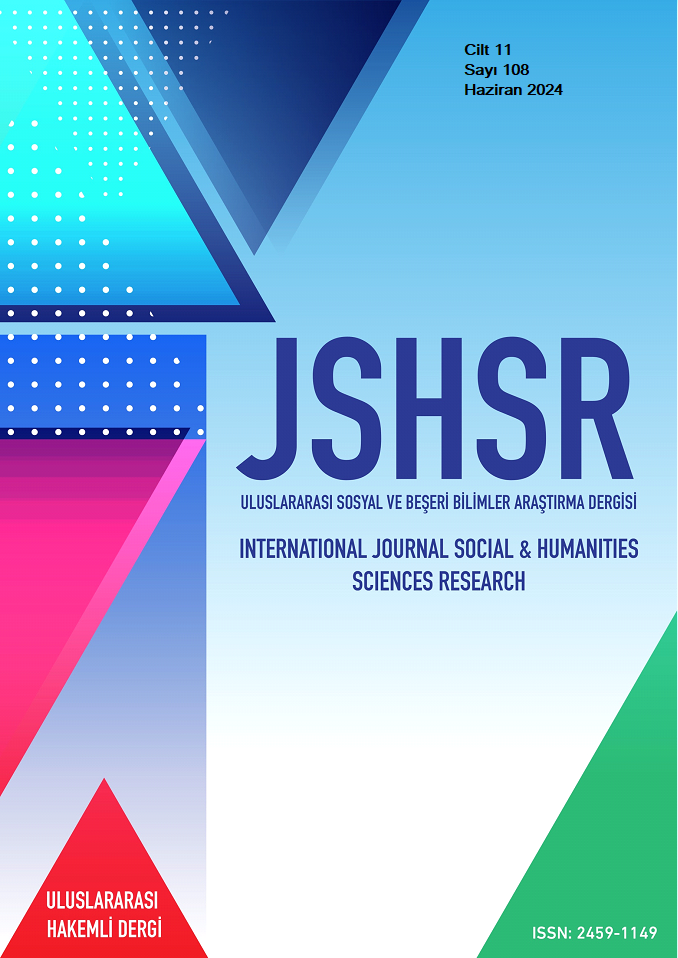Repair Process Stages and Protection in Traditional Plain Weaves
DOI:
https://doi.org/10.5281/zenodo.12603222Keywords:
Restoration, Protection, Lint-Free Weaving, Repair ProceduresAbstract
There are carpet and rug weavings in the Anatolian lands, which are very rich in terms of traditional weaving products. It is possible to find weavings that are still used in many homes today, but also in museums and collections. Especially the textiles owned by individuals are transferred from generation to generation and are preserved with special meanings. Repair, maintenance and protection measures are taken, especially for the long-term protection of woven products that are still in use. The studies carried out on the protection and repair of pile-free textiles in our country are not considered sufficient. Weavings, which are a part of our culture, undergo deformation over time and lose their usable properties over time. To prevent this, some protection measures must be taken and repairs must be carried out.
However, as a result of the lack of adequate promotion in active workshops working on this subject, individuals intervene in weavings within the framework of their own means and knowledge. When these interventions are done incorrectly, they cause irreversible problems. In this study, the studies and production techniques for the maintenance and repair of lint-free textiles, which have ethnographic value, were examined. Information was obtained by contacting the weaving repair workshops and the work was prepared by taking repair photos. This study has been prepared in two categories, which determine the repair processes and the protection methods of the textiles. The data obtained during the repair phase were photographed, information was given and suggestions were made. This study is planned to provide information about the maintenance, repair and protection of lint-free textiles and to provide resources for future studies.
References
Acar, B. (1995). Kilim ve Düz Dokuma Yaygılar, Apa Ofset Basımevi.
Akkuş, C. (Kişisel görüşme) (2019). Akkuş Halı Kilim Onarım Atölyesi, Isparta.
Anmaç E. Karavar, G. (2000). Restorasyon ve Konservayon Öncesi El Dokuması Halıların Teknik Analizi ve İşlem Aşamaları. III. Ulusal Türk El Dokumalarına Yaklaşım ve Sorunları Sempozyum Bildirileri. Konya, s, 166.
Anmaç, E. (2004). Tekstilde Kullanılan Lifler Özellikleri ve Kullanım Alanları, Dokuz Eylül Yayınları.
Binark, İ, (1990). Gérard Benoit-Daniéle Neirinck, Endüstriyel ve Tropikal Ülkelerin Arşiv Binalarında En Ekonomik Korunma Metot ve Vasıtaları, Ankara.
Demir, A. Öktem, T. Seventekin, Necdet. (2008). Reaktif Boyalı Pamuklu Materyallerinin Işık Haslığına Uv Absorplayıcıların Etkisi. Tekstil ve Konfeksiyon, s. 211-220.
Dönmez, S. (2012). Müzecilik Hizmetleri Açısından Bölge Restorasyon ve Konservasyon Laboratuvarları Oluşturulması, Uzmanlık Tezi, Ankara.
Küçük, C. (2000). Türkiye’de Restorasyon Eğitimi Sorunları ve Sonuçları”, Ulusal Taşınabilir Kültür Varlıkları Konservasyonu ve Restorasyonu Kolokyumu. Ankara Üniversitesi Basımevi.
Salman, F. & Öztürk, G. (2013). Aksaray Sultanhanı Kasabası Halı Restorasyonunda Örnek Bir İşletme ‘Sultan Saray Halı”. Arış Halı, Düz Dokuma, Kumaş, Giyim, Kuşam ve İşleme Sanatları Dergisi, Sayı, 9, s.77.
Tapan, M. (2007). Soru ve Cevaplarla Koruma, Çizgi Basım Yayın Ltd. Şti..
Tarakçıoğlu, I. (1983). Tekstil Terbiye ve Makineleri, Cilt: II, Uludağ Üniversitesi Basımevi.
Temiz, A. (2000). Genel Mikrobiyoloji Uygulama Teknikleri, Hatipoğlu Yayınevi.
Torcu, D. (2013). UNESCO Türkiye Milli Komisyonu IV. Türksoy Üye Devletleri UNESCO Milli Komisyonları Toplantısı, II. Kültürel ve Doğal Miras Semineri. Birleşmiş Milletler Eğitim, Bilim ve Kültür Kurumu, UNESCO Türkiye Milli Komisyonu, s. 2.
Okca, Koyuncu, A. (2009). “Serinhisar (Denizli) Düz Dokumalarının Teknik ve Desen Özellikleri”, II. Uluslararası Türk El Dokumaları (Tekstil) Kongresi ve Sanat Etkinlikleri, Selçuk Üniversitesi Selçuklu Araştırmaları Merkezi Başkanlığı Yayınları, Konya 2009, s. 195.
Okca, Koyuncu, A. (2014). Geleneksel Dokumalarda Koruma ve Onarım Prensipleri. Pamukkale Üniversitesi Sosyal Bilimler Enstitüsü Yüksek Lisans Tezi.
Özhekim, Atiş, D. (2009). “Türk Kültüründe Taşıma Amaçlı Üretilen Kirkitli Dokumalar”, II. Uluslararası Türk El Dokumaları (Tekstil) Kongresi ve Sanat Etkinlikleri, Selçuk Üniversitesi Selçuklu Araştırmaları Merkezi Başkanlığı Yayınları, Konya 2009, s. 183.
Öztürk İ. Ömür, V. (2007). “Geleneksel Tekstillerin Korunması İçin Bölgesel Konservasyon Laboratuarları Kurulması Zorunluluğu”, I. Uluslararası Türk El Dokumaları Kongresi, Selçuk Üniversitesi, Selçuklu Araştırmaları Merkezi Başkanlığı Yayınları, Anka Basım Yayın, Konya, s,53.
Öztürk, İ. (2007). Koruma Kültürü ve Geleneksel Tekstillerin Korunması Onarımı, Duman Ofset Ltd. Şti.
Downloads
Published
How to Cite
Issue
Section
License
Copyright (c) 2024 INTERNATIONAL JOURNAL OF SOCIAL HUMANITIES SCIENCES RESEARCH

This work is licensed under a Creative Commons Attribution 4.0 International License.


